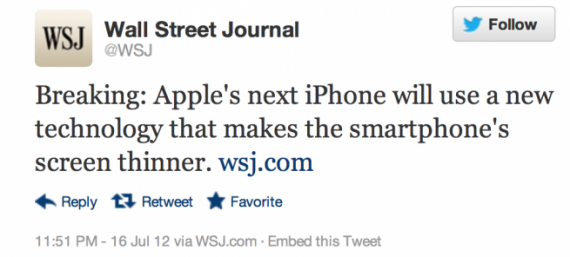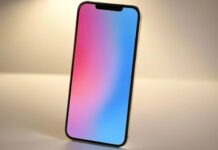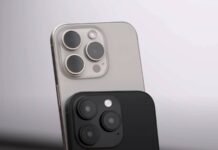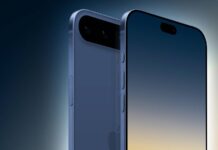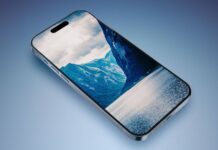De cateva luni se speculeaza ca iPhone 5 ar putea avea un nou ecran fabricat folosind tehnologia in-cell si astazi cei de la Wall Street Journal par sa confirme teoria. Intr-un tweet publicat pe contul publicatiei suntem anuntati ca iPhone 5 va avea un ecran mai subtire construit folosind o noua tehnologie si desigur ca gandul merge direct la in-cell. V-am spus deja ca iPhone 5 ar putea fi cu pana la 15% mai subtire decat iPhone 4/4S multumita acestei noi tehnologii pe care Apple pare sa o foloseasca in viitorul sau dispozitiv.
Daca cei de la Wall Street Journal vor oferi informatii noi va voi anunta printr-un nou articol. Cei de la Wall Street Journal au oferit pana acum informatii cat se poate de exacte despre produsele Apple, deci putem trata si acest zvon cu toata seriozitatea.
UPDATE: Se pare ca Sharp , LG si o noua companie numita Japan Display vor construi noile ecrane si tehnologia descrisa de Wall Street Journal pare a fi cea in-cell despre care v-am vorbit. Utilizarea acestei noi tehnologii simplifica procesul de fabricare a dispozitivelor, subtiaza ecranul, dar imbunatateste totodata calitatea imaginilor afisate de acesta. Practic vorbim despre un ecran de o calitate mai buna care va contribui la subtierea iPhone-ului si ne va oferi imagini de o calitate net superioara.
HONG KONG—Apple Inc.’s next iPhone, currently being manufactured by Asian component makers, will use a new technology that makes the smartphone’s screen thinner, people familiar with the matter said, as the U.S. technology giant strives to improve technological features amid intensifying competition from Samsung Electronics Co. and other rivals. Japanese liquid-crystal-display makers Sharp Corp. and Japan Display Inc.—a new company that combined three Japanese electronics makers’ display units—as well as South Korea’s LG Display Co. are currently mass producing panels for the next iPhone using so-called in-cell technology, the people said.
The technology integrates touch sensors into the LCD, making it unnecessary to have a separate touch-screen layer. The absence of the layer, usually about half a millimeter thick, not only makes the whole screen thinner, but the quality of displayed images would improve, said DisplaySearch analyst Hiroshi Hayase.


